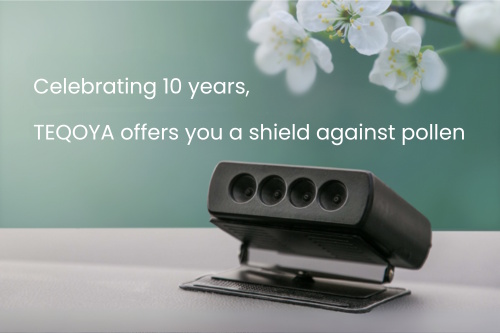Air pollution: are we too careful?
Air pollution is a ubiquitous risk that we face daily due to both natural and technological factors. While it's wise to take precautions to safeguard our health, we must ask ourselves if our level of vigilance is sufficient. Are the measures we take truly effective in mitigating the risks of air pollution? It's essential to reevaluate our approach to air pollution to ensure that our efforts are truly protecting our health and the environment.
Quality vs Quantity in Health: why more isn't always better
In Trop Soigner rend malade, Claude Rambaud and Jean Pierre Thierry, lawyer and doctor respectively, explain that the number of cases of various diseases is stagnating. Here is their explanation: "Nowadays, any risk factor is treated as a disease". They also take an interest in cholesterol. Statin drugs are effective in reducing the risk of heart disease but they have many negative health effects. They are often taken by high-cholesterol patients. However, in 2005, Japanese scientists found that "high total cholesterol is not positively associated with coronary heart disease mortality rates". High-cholesterol individuals should not use statins - in their best interests.
Why we must raise awareness?
In the current context of increasing air pollution, it is important to be careful. In 2012, WHO estimates that pollution was responsible for at least 7 million premature deaths. For Dr. Maria Neira, Director of WHO Department of Public Health, "We have a public health emergency in many countries from pollution. It's dramatic, one of the biggest problems we are facing globally, with horrible future costs to society". Four air pollutants are measured with great precision to their danger to health: fine particles (PM10 and PM2.5), nitrogen oxides (NO and NO2), carbon monoxide (CO) and ozone (O3).
The fine particles in the air are mainly emitted by road traffic and industrial activity. According to their size, they penetrate more or less deeply into the respiratory system. Between 2004 and 2006, experts from the Institut de Veille Sanitaire (InVS) estimated the impact of fine particles on health in nine French cities (Bordeaux, Le Havre, Lyon, Marseille, Strasbourg and Toulouse). They counted almost 1,000 cardiac and respiratory hospitalizations per year and noted a decrease in life expectancy to 30 years from 3.6 to 7.5 months. They also found that some of these particles have mutagenic and carcinogenic properties.
Nitrogen oxides (NO and NO2) are essentially generated by vehicles registered before 1997 and diesel vehicles. They can cause breathing problems, lung infections, and asthma attacks.
Carbon monoxide (CO) has two major sources: road traffic and the malfunctioning of domestic heating technology. This toxic gas causes nausea and headaches. High and prolonged exposure to carbon monoxide can cause death.
Ozone (O3) is formed by chemical reaction involving precursor pollutants. Asthmatics, children and the elderly are particularly vulnerable to ozone. This can cause breathing disorders and it increases sensitivity to pollen.
We have to be careful, in particular about pollution issues

Air pollution affects all of us all. It affects the at-risk people: the elderly, children and those with asthma, allergies or cardiopulmonary disease. It also extents to the urban population, as a result of their exposure to road traffic and industrial discharges. In the short run, during pollution peaks, InVS's research shows anincrease in the number of hospitalizations, especially for cardiovascular and respiratory issues. In the long run, between air pollution episodes, the same research agrees on the significant impact of pollution on mortality and hospitalizations. Because our body does not adapt to pollution, we need to be careful. The TEQOYA products protects us against fine particles and pollen. Moreover, they do not emit ozone. Let's take care of our health by choosing an air purifier TEQOYA.
Information on air quality and news from TEQOYA
How does an air ionizer work?
#Essential
Natural environments are rich in negative ions. This is precisely the principle on which the air ionizer is based on. However, do you know how this technology manages to capture the pollution particles contained in the indoor air to purify your home?
Are air purifiers effective against viruses, especially the coronavirus COVID-19
#Virus and microorganismes #L'essentiel
In December 2019, a respiratory virus of the Coronavirus family appeared in the Wuhan region of China and has now spread to all continents.
What is eco-responsibility?
#Essential
Purifying indoor air while protecting your health and the planet is possible! Say goodbye to filters and make way for negative ions: choose an eco-responsible air purifier that will easily reduce energy and resource consumption.

